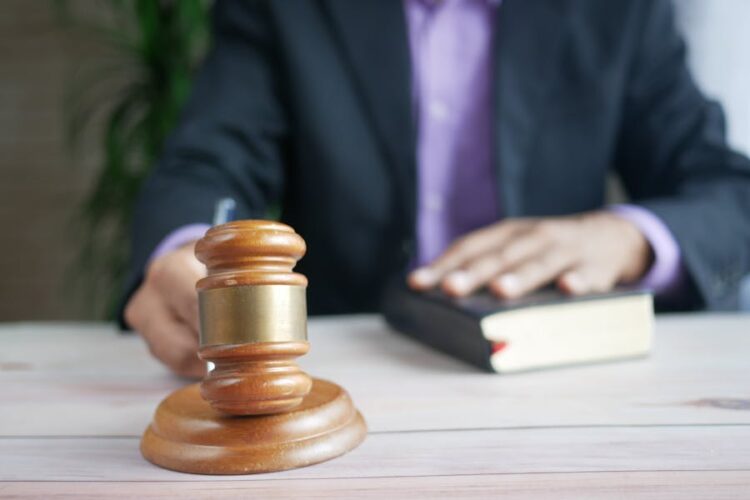The judicial process is designed to ensure fairness and justice for both parties. While most people focus on courtroom processes, the battle often begins even before trial. One critical aspect is pretrial motions. These legal requests are ideally requests for the court to make rulings on specific issues before the trial begins.
These motions address several concerns, ranging from evidence admissibility to procedural matters. This means they can influence what happens during the trial and determine if the trial is necessary. Below are a few things to know about these motions.
What are Pre-Trial Motions?
They are formal requests submitted by the prosecution or defense to the court before the actual trial. They are meant to resolve several legal questions and address potential issues that can arise during the trial. While some motions are procedural, others have a significant impact on the case progress and outcome.
How the judge rules on these motions sets the tone for the trial. It also determines the evidence that can be presented and whether the case will proceed. Pretrial motion comes in different forms, including:
- Motion to dismiss: This is a legal request to throw out the case entirely. This is mostly due to procedural errors.
- Suppress evidence: A motion that seeks to prevent or limit certain evidence from being introduced. It is typically used to exclude evidence that is prejudicial or misleading.
- Limine motion: A formal request to prevent or limit certain evidence from being introduced. Typically used to exclude evidence that is prejudicial or misleading.
- Asking for continuance: This is filled when one party needs more time to prepare or gather evidence.
These motions play an important role in the legal process. The outcome of these motions significantly shapes the trajectory of the case before it proceeds to the courtroom. The main goal of these motions is to create a fair and just trial.
How Pre-Trial Motions Influence Case Outcome
Pretrial motions are evidently an important part of the legal process. They shape the direction and outcome of the case before it reaches the trial stage. They have the following influence on the outcome of your case:
1. Determines Evidence Admissibility
These motions significantly determine the admissibility of the evidence presented. For instance, the defense may request to suppress evidence if they believe it was collected unlawfully. This occurs if it was gathered through illegal search or the process violated the defendant’s right. The specific evidence is excluded from the trial if they succeed with the request. This can significantly weaken the prosecution’s case.
The same applies to motions in limine. This motion is filed to exclude specific evidence from being used in the trial. If one party successfully excludes evidence that could cause bias or prejudice to the jury, it significantly shifts the balance in their favor. For instance, excluding the past criminal behavior of a defendant prevents the jury from forming negative assumptions that could influence their decisions. The presence or absence of certain evidence is always a deciding factor in all trials.
2. Potential for case dismissal
“Can charges be dropped at a preliminary hearing” is a common question along the corridors of justice. These motions can lead to case dismissal. The defendant may file a request if they believe there is insufficient evidence to support the charges. This mostly occurs if the prosecution violated their rights. The case gets entirely dismissed if the judge rules in favor of the defendants.
This often occurs in many ways. It often begins with a successful motion to suppress, which excludes crucial evidence from the trial. With this, the prosecution won’t have a viable case, prompting the judge to dismiss the charges entirely. Early dismissal of the case spares the defendant the emotional and financial burdens of undergoing the trial. This makes it the most desirable outcome for defendants. It also mitigates the wastage of judicial resources by limiting unnecessary trials.
3. Encourages settlement or plea bargain
Pretrial motions can also encourage early resolution of the case. Some parties decide to opt for plea deals instead of going to trial. For instance, if the defense files and wins and succeeds in excluding crucial evidence, the prosecution will weigh its chances of securing a conviction. They may opt to offer a favorable plea deal to avoid the uncertainties of the trial.
Similarly, if the defense doesn’t succeed with its requests, it may consider negotiating a plea deal. This helps it avoid the risk of a harsher sentence by proceeding to trial. Resolving the case early is beneficial to both sides. It saves time and provides a predictable outcome. In most cases, resolutions of these motions are the tipping point that encourages both parties to find mutually agreeable resolutions outside the courtroom.
4. Shape the legal strategy
Pretrial motions also shape the legal strategies for the prosecution and defense. They significantly define what evidence and arguments are permitted during the trial. Successful motions can suppress or allow the introduction of critical evidence. For instance, a motion that eliminates crucial evidence means the prosecution will have to rethink its approach. They may also be forced to offer a plea bargain.
Similarly, if the prosecution succeeds, the defense will have to adjust its strategy to counter the inclusion of the damaging evidence. These motions also clarify the legal grounds for the trial. For instance, the defense attorney can file a dismissal motion if they think the case has legal flaws. If the court rules in their favor, the charges are dismissed entirely.
Endnote
Pretrial motions are essential as they allow attorneys of both parties to address critical concerns before the trial begins. They serve to clarify legal disputes and protect both party’s constitutional rights. They also define the arguments that can be present in court during trial. The outcome of these motions has a profound impact on the general direction of the case. They determine what evidence can be presented and the likelihood of conviction. They also determine whether the case will proceed to trial.










